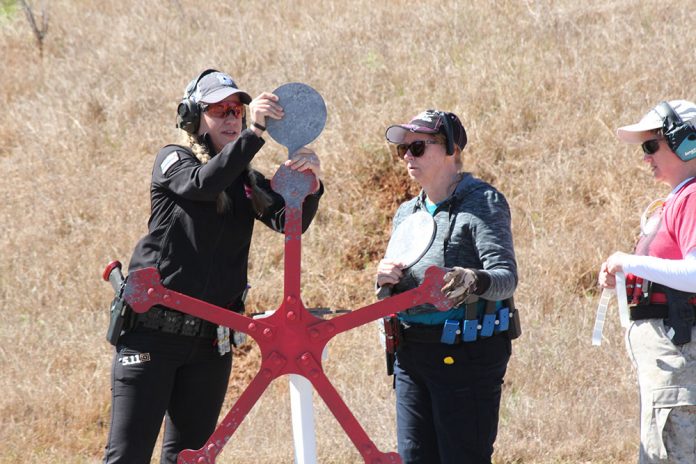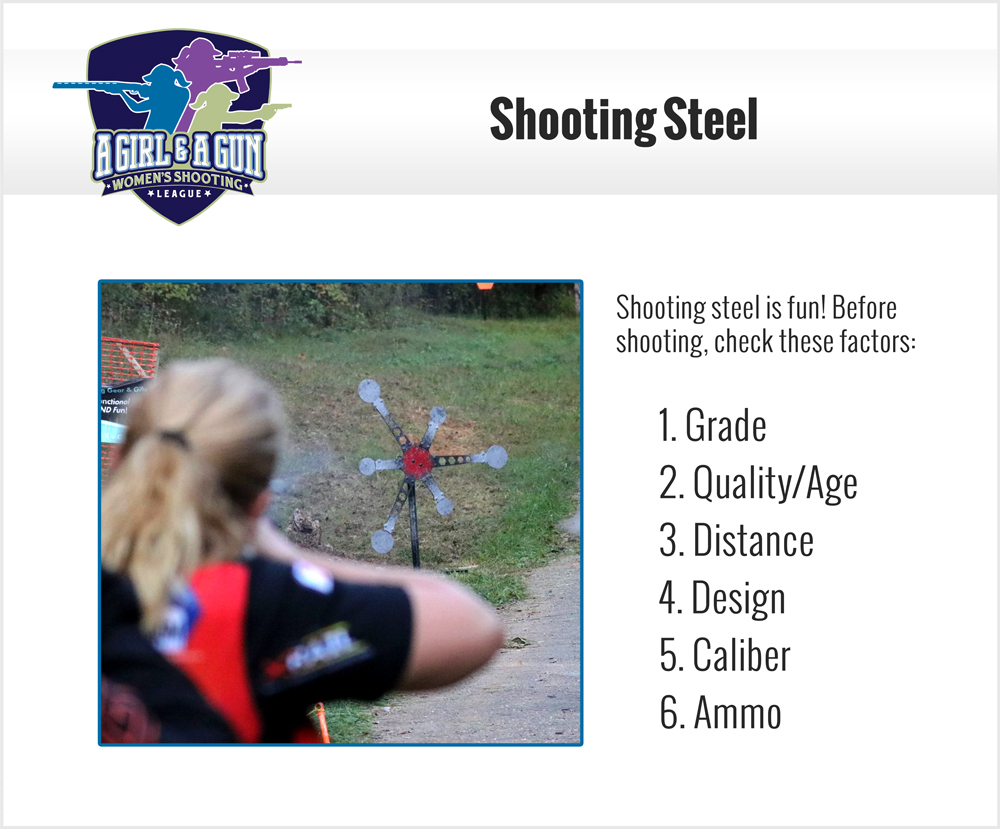
Shooting steel is fun! You hear the “ping!” when you hit the target, and can often save you time and money from shοoting paper targets. However, shοoting steel can be dangerous if you use the wrong caliber or shοot at the wrong distance.

Follow these six guidelines to stay safe:
1. Grade: Steel targets should have a Brinell hardness number (BHN) of at least AR500 or AR550.
2. Quality/Age: Do not use a steel target with any cratering, pitting, cracking, or an uneven surface because it can cause dangerous ricochets.
3. Distance: Shοoters should maintain a 15-yard minimum distance from steel with handguns, and a 100-yard minimum with rifles. Always check manufacturer’s guidelines.
4. Design: Quality steel targets are designed for predictable splatter. There are never any exposed bolts, clamps, or brackets on the shooting surface, and the target leans forward slightly to dissipate some of the bullet’s energy.
5. Caliber: Check manufacturer’s guidelines for approved uses. Some targets may be rated for rimfire or standard pistol calibers only. Others may be rated for specific rifle calibers.
6. Ammo: Never shοot green-tiρ or bi-metal bullets at steel.
When it comes to your safety, don’t settle for the advice of your local welder or do-it-yourselfer, who thinks he can fabricate a steel target for you. Shooting on poorly designed targets made of inferior steel can cause severe bodily harm.
Remember, at the range we are all Range Safety Officers. If you see something iffy or unsafe, speak up!
Steel targets are so much fun fun — and one of the greatest tools for firearms training and competition — if they are manufactured correctly. For more info, check out our AG & AG target sponsors: Red Stitch Targets, Gunfighter Targets, and Action Targets.
SOURCE ARTICLE: https://www.agirlandagun.org/shooting-steel/



